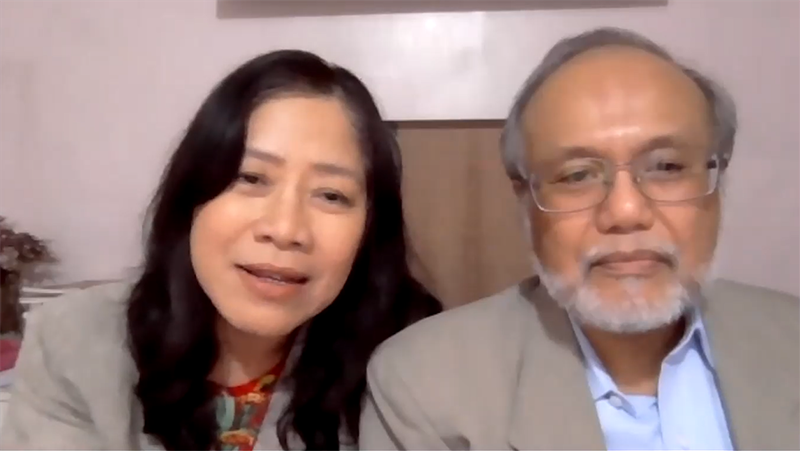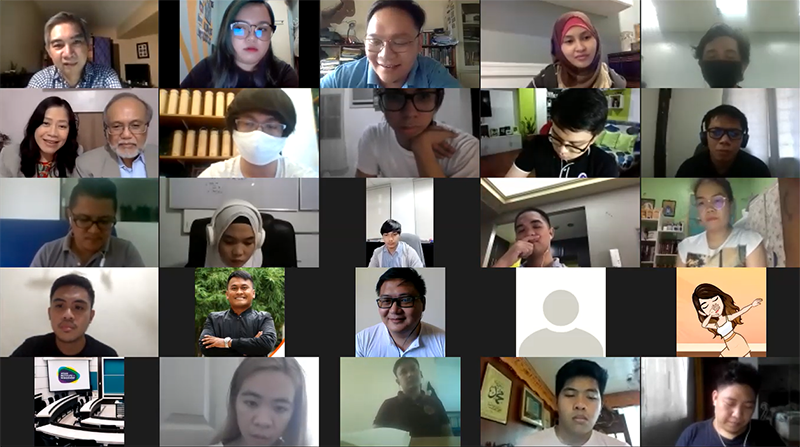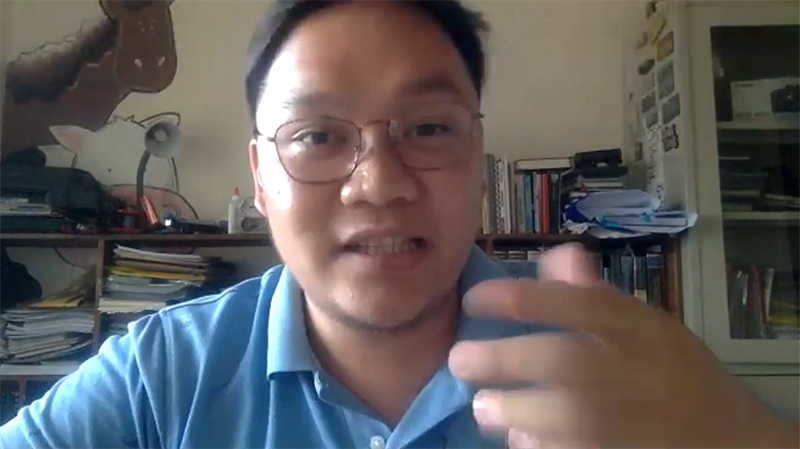 Dr. Marivic Bernido (left) and Dr. Chris Bernido (right) during the FBLP 3 Zoom session
Dr. Marivic Bernido (left) and Dr. Chris Bernido (right) during the FBLP 3 Zoom session
The Asian Institute of Management (AIM) TeaM Energy Center for Bridging Leadership (TEC-BL) invited Ramon Magsaysay Awardees Dr. Christopher “Chris” Bernido and Dr. Ma. Victoria “Marivic” Carpio-Bernido to speak before the fellows of the Future Bridging Leaders Program (FBLP) 3 last July 27, 2020. FBLP 3 is the Institute’s flagship, yearlong leadership development program for the Filipino youth.
The Bernido couple, both holders of Ph.D. in Theoretical Physics, developed the Dynamic Learning Program (DLP) – a teaching pedagogy that promotes context-specific and activity-based independent learning among students. First implemented in Jagna, Bohol through the Central Visayan Institute Foundation (CVIF) in 2002, this learning method has dramatically shifted the educational landscape in the rural municipality and in more than 200 schools where it is now being carried out
Grounding learning modules on students’ daily experiences, it reduces the need for costly educational materials and enables students from low-income rural areas to perform at par with students from high-income cities. The Learning Activity Sheets (LAS) are designed for students to digest and answer on their own without prior lectures from teachers, thereby reducing the amount of time needed for teacher intervention. “Parallel classes” are conducted wherein classes for different sections are held simultaneously with the guide of facilitators, and only one (1) expert teacher roaming and delivering a synthesis of lessons at the end of each activity.
In the COVID-19 pandemic situation, the DLP model provides an opportunity for students to actively learn in their own homes without constant internet connectivity. “Parallel homes” are created, with teachers delivering a synthesis of lessons only once a week for each grade level through various options such as television, radio stations, or online videos. Printed LAS are circulated through the barangay halls for parents to pick-up.
 A snapshot of the FBLP 3 class with Dr. Chris and Dr. Marivic Bernido in Zoom video conferencing.
A snapshot of the FBLP 3 class with Dr. Chris and Dr. Marivic Bernido in Zoom video conferencing.
Having read the case materials and having watched documentary videos on the DLP, the FBLP 3 fellows had the opportunity to discuss the salient aspects of the DLP with the Bernido couple.
“In conceptualizing the DLP, poverty became the ace” Dr. Marivic shared on how they came up with the DLP and its relevance to the 4th industrial revolution. “Poverty put such strong constraints on the problem, that we were forced to be so creative or innovative, such that… we were forced to zero in on the essentials of our problem. And now when you zero in on the core, you are able to see, what the physicists would say, the universals – those parts of the problem that are independent of time… The DLP can address educational problems not just what we face at present, what we have faced in the past, but what we project to be facing in the future.”
Dr. Chris also explained how they gradually implemented the DLP by “problem-solving of little things.” “You have a vision that is clear to you, and you have a small obstacle and you try to solve this, another obstacle and you try to solve this… The four crucial components of the CVIF-DLP fell into place in 2002, but the pieces were actually an offshoot of solving problems – seemingly unrelated problems at the time but then after three years, it became a package, “ he shared.
 Aldrin Soriano, FBLP 3 fellow and Councilor of Mangaldan, Pangasinan, asks a question to the Bernido couple.
Aldrin Soriano, FBLP 3 fellow and Councilor of Mangaldan, Pangasinan, asks a question to the Bernido couple.
Answering a question on how they got the buy-in of stakeholders, Dr. Marivic responded, “Focus on the good performance numbers, and then eventually you’ll have support from other sectors of society.” In response to a query on whether the DLP can be applied to teach organic farming, Dr. Chris replied “Yes, in fact Smart Communications, Inc. help bring the DLP to the Alternative Learning System (ALS) of DepEd. And they have given it to indigenous people, and they even use the CVIF-DLP in prisons.”
The DLP serves as an illustration to fellows and other development workers on how to create models for change that can be applicable to various contexts, particularly on diminishing social inequities at a time it is needed most – in the time of a pandemic.